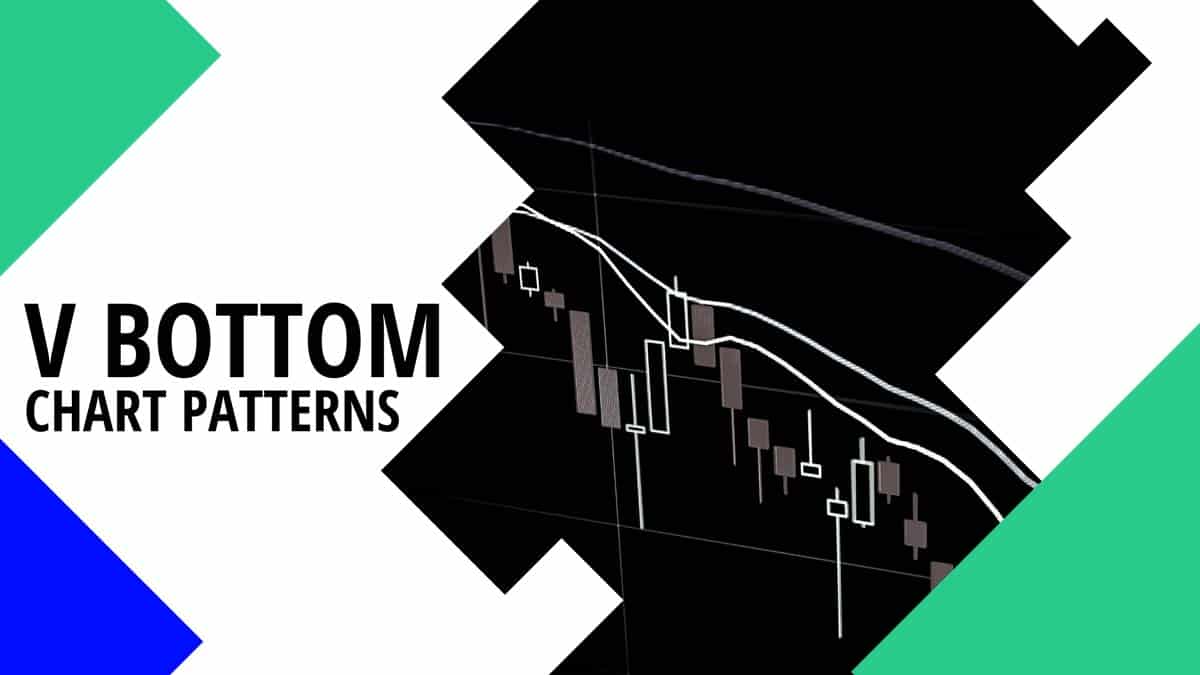What is a V-bottom Chart Pattern?
The v-bottom pattern got its name from the v-shaped pattern. This pattern comes up when price momentum moves from an aggressive selling to an aggressive buying condition.
Quick signal that a v-bottom is appearing would be the availability of a 1 – 3 bar reversal. Followed by an increment in momentum and volume during the downswing that makes up the low and the present upswing that follows.
Even though it barely happens, it can be a different type of indication that affirms a v-bottom is developing.
How does it Occur?
This occurs most especially when you begin observing an increment in purchasing pressure afterward. Monitoring the price action by adopting different periods can, therefore, be handy when you perceive a v-bottoming is coming.
A conservative means to trade the v-bottom would be to exercise patience for a break and close beyond the resistance level. And to try a bullish position immediately price returns back to the resistance level and a decline happens.
You can place a suitable target beyond the resistance level, same as the distance calculated from the low of the formation to the resistance level high.
Confusion will occur regarding where the support level should be. But experienced investors who have seen this v-bottom reversal quickly enough may have tried bullish positions. Make use of any swing that forms in the course of the previous selling stage.
It is not new to us all that SPY attained another strong long stage after v-bottom traded higher for the rest of 2019.
Trading v-bottoms can be hard because you will only probably be able to identify this pattern immediately price breaks beyond the resistance level but if you observe the momentum closely as well as volume, then they can be quick signals that a v-bottom is coming.
A v-bottom has a very sharp trough. Traders hurriedly lead to a rapid price drop, then a full retracement of the short movement in the aftermath.
A v-bottom frequently shows up following an economic announcement that caught the trader unaware. This is an indication of high volatility.
The formation’s theoretical aim is the proximity between the resistance level and the lowest part of the v that you plot on the resistance level.
Diverse requirement that makes it possible to determine a V-bottom pattern
- The lowest point of the V is usually develops by a single candlestick. Usually with a huge low wick that signals the traders’ interest for a reversal.
- A very steep short trendline controls the unexpected short movement that develops the v. The price barely pauses in the course of the movement.
- The angle of the short line leading to the short reversal has to be very closely related to the angle of the short line that led to the short movement.
- The formation’s resistance level develops by the topmost level before the development of the v.
Trading strategies with V-bottoms
The traditional strategy:
- Entry: open a bullish position at the break of the resistance level
- Stop loss: you can insert the stop loss beneath the resistance level
- Objective: theoretical objective of the formation
- Advantage: the long movement most times continues after the break in the resistance level
- Disadvantage: It is hard to put a stop loss rightly. Because the only genuine final lowest point is the one above the V top
The aggression Strategy:
- Entry: open a bearish position if the angle on the short line that controls the short movement appears to be similar to the angle of the bullish line that drove the short movement.
- Stop loss: you can insert the stop beneath the final lowest one
- Objective: revert to the resistance level
- Advantage: the increment can be very rapid
- Disadvantage: the formation is not yet affirmed and the long movement following the V bottoms’ low point could be a basic adjustment.

 Good Trading requires the Best Charting Tool!
Good Trading requires the Best Charting Tool!

 We loved Marwood Research’s course “Candlestick Analysis For Professional Traders“. Do you want to follow a great video course and deep dive into 26 candlestick patterns (and compare their success rates)? Then make sure to check this course!
We loved Marwood Research’s course “Candlestick Analysis For Professional Traders“. Do you want to follow a great video course and deep dive into 26 candlestick patterns (and compare their success rates)? Then make sure to check this course!